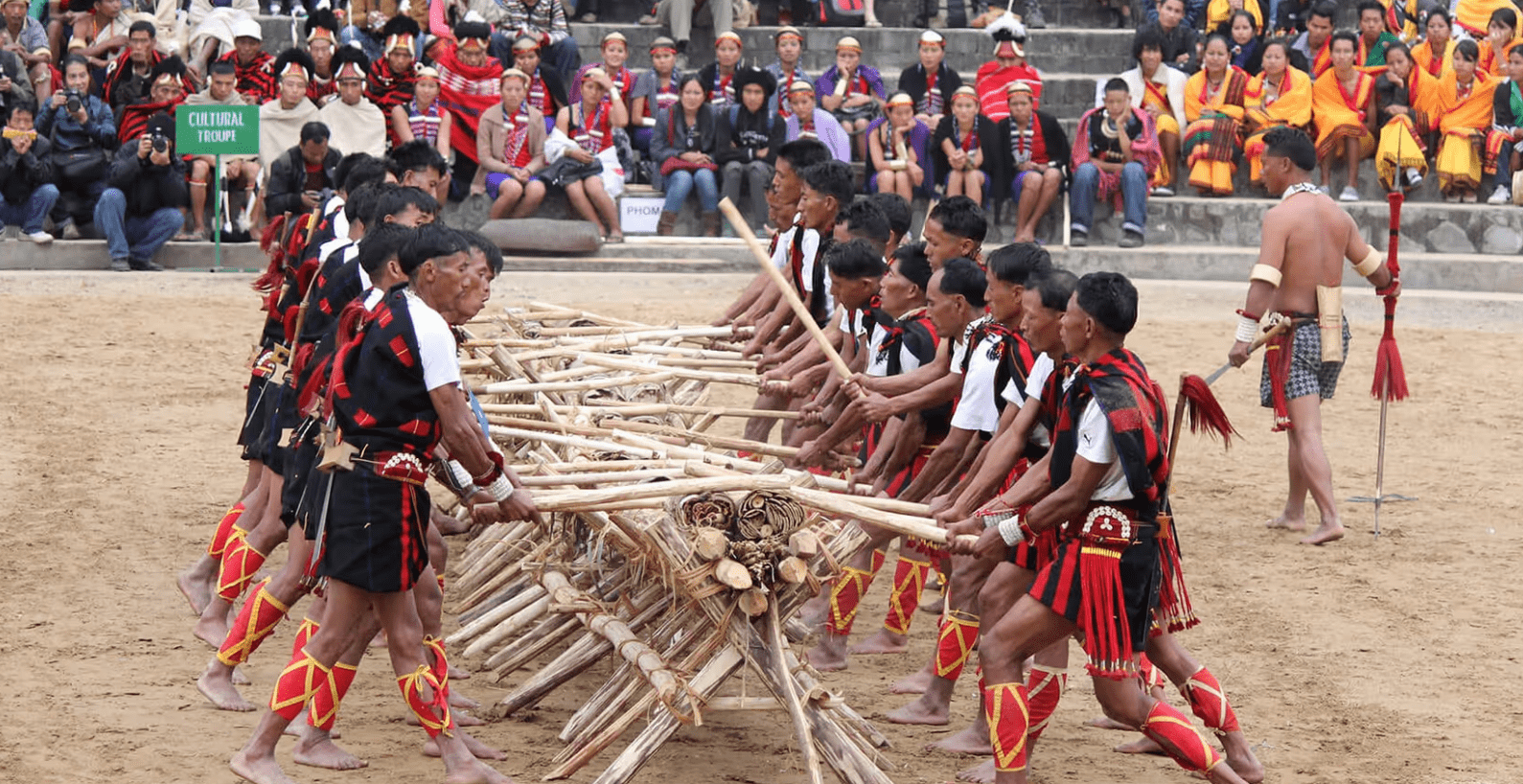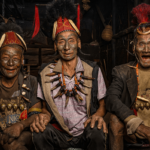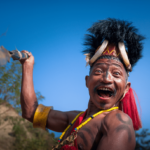Aoling Festival: India is renowned for its multitude of festivals, earning it the title “land of festivals” globally. Within this vibrant landscape, Nagaland stands out as the “land of festivals” within India itself. I had long planned a trip to Nagaland to immerse myself in its rich cultural tapestry. Attending the Hornbill Festival was an ideal way to experience this, as it showcases the dynamic culture and traditional practices of all Nagaland’s tribes. While we thoroughly enjoyed the Hornbill Festival, we were equally fascinated by the Konyak tribe, the last headhunters of Nagaland, and were eager to meet them.
Experiencing Aoling Festival in Longwa
Our passion for exploring local and folk festivals in India led us to Mon district on April 3rd. Our goal was to participate in the Aoling Festival and gain deeper insight into the lives of the renowned Konyak tribe, including meeting the last of Nagaland’s headhunters.
Mon – The Realm of the Konyaks
Located in the northeastern part of India, Nagaland is one of the country’s smallest yet most enchanting states, steeped in folklore and tradition. The Konyak tribe, famous for their historical headhunting practices, resides in Mon district, which is flanked by Myanmar to the east and Assam to the west.
Tattooed Headhunters of Nagaland
Mon district, characterized by its hilly terrain and extending from the foothills to the Naga Hills and Patkai ranges, is the administrative and largest town in the district. The Konyak tribe, notorious for their headhunting rituals, calls Mon district home. For further details about them, check out our article on the Konyak tribe, the fierce headhunters of Nagaland.
Immersing in the Konyak Culture and Aoling Festival
We aimed to spend most of our trip engaging in the festival celebrations, as traditional events offer a unique and profound understanding of local culture. With only a few days available, we chose to focus on the Aoling Festival with the Konyaks. Although we struggled to find accommodation in Mon town due to the festival’s popularity, a friend recommended a homestay in a nearby village.
After contacting the homestay owner, we secured our booking and headed towards Mon. However, upon arrival, we faced some challenges finding directions to Sheanghah Chingyu, the village where our stay was booked. Despite some doubts, the journey led us to a warm and welcoming experience in Sheanghah Chingyu, one of the friendliest Konyak villages we encountered.
Understanding Aoling Festival
The Aoling Festival is one of the major celebrations of the Konyak tribe, marking the beginning of the new year and the sowing season. Known as Aoleang Monyu, it is observed from April 1 to 6 each year after the completion of seed sowing. The festival involves various rituals, including cattle sacrifices to seek blessings from the supreme god, Yongwan. The Konyaks don their traditional attire, engage in lively dances, and hold elaborate feasts during this period. Additionally, families of the recently deceased use this time to say their final farewells and conclude their mourning period.
Significance and Rituals of the Aoling Festival
Each day of the Aoling Festival carries distinct significance. The first two days, Hoi Lai Yah Nyih and Yin Mok Pho Nyih, are dedicated to festival preparations, including food and rice beer preparation. On the third day, Yin MokShek Nyih, the animals collected are slaughtered. The fourth day, Lingnyu Nyih, is the main celebration day with traditional attire, songs, dances, and a grand feast. The last two days, Lingha Nyih and Lingshan Nyih, focus on family time and post-festival cleanup. Celebrations might vary slightly between villages, as we observed in Sheanghah Chingyu and Longwa.
Our Experience at the Aoling Festival
Mon district, relatively remote, is best reached by flying or taking a train to Dibrugarh, followed by a drive. We arrived in Dibrugarh and proceeded to Mon, eventually reaching Sheanghah Chingyu village after navigating rough terrain.
Sheanghah Chingyu, a large and influential Konyak village, welcomed us despite heavy rains. Our homestay, belonging to the deputy chief of the village, provided a comfortable stay. We were immersed in the Konyak culture through local stories, traditional meals, and the Aoling Festival celebrations.
Celebrations at Sheanghah Chingyu and Longwa
The festival at Sheanghah Chingyu featured vibrant performances and activities despite the weather challenges. We then traveled to Longwa for the main festival celebrations on April 6. Longwa, located on the Indo-Myanmar border, offered a unique cultural experience with its dual citizenship residents. The festival in Longwa included more participants and larger-scale celebrations, featuring traditional dances, folk songs, and a dramatic gun firing competition.
Conclusion
Our time at the Aoling Festival in Mon district was unforgettable, offering an authentic and immersive cultural experience. Unlike the more tourist-focused Hornbill Festival, Aoling provided a raw and genuine glimpse into Konyak traditions. The festival’s growing popularity has not yet overshadowed its authenticity, making it a must-see for cultural enthusiasts.
Aoling Festival Travel Guide
For those planning to visit the Aoling Festival, it is held in Mon district from April 1 to 6. You can experience the festival in Mon Town, Sheanghah Chingyu, and Longwa. Accommodations may be scarce during the festival, so plan ahead. Explore local villages, visit gunsmiths and metal smiths, and enjoy Naga cuisine for a complete experience.
How to Reach Mon
The nearest airport is Mohanbari Airport in Dibrugarh, approximately 130 km from Mon, which takes about 5 hours to reach by car. Alternatively, you can take a train to Dibrugarh Railway Station. Public transport options include shared sumos from Sonari or a combination of autos and sumos from Namtola to Mon. Dimapur and Kohima also provide access to Mon via bus or train.


